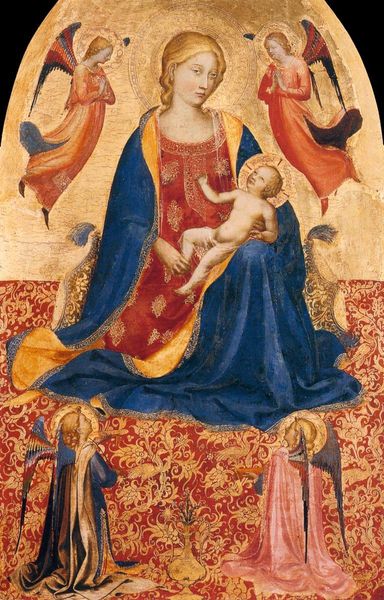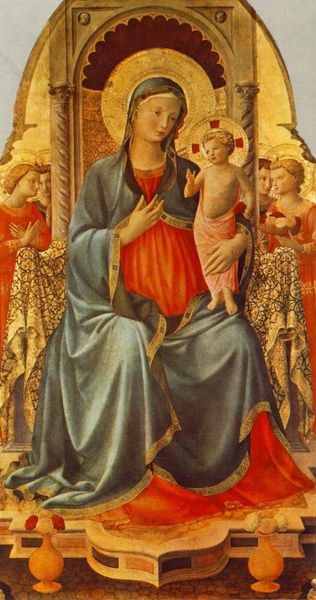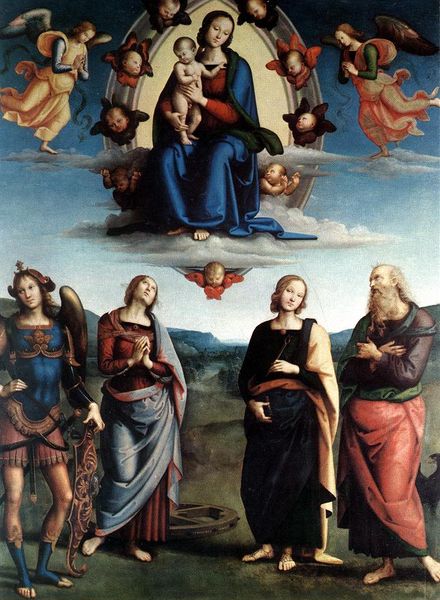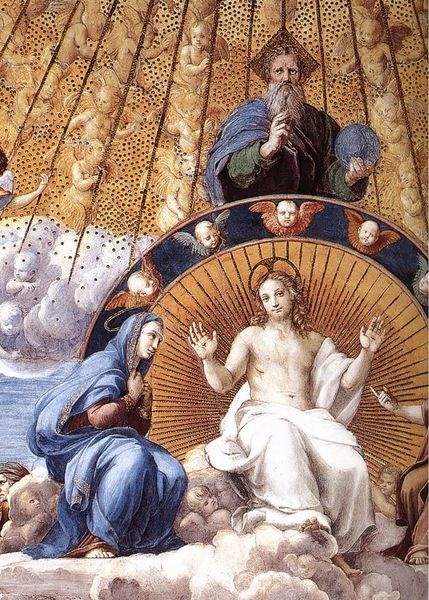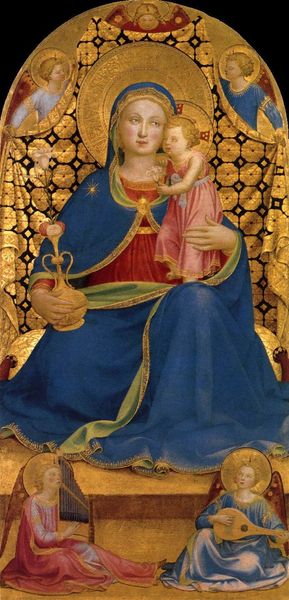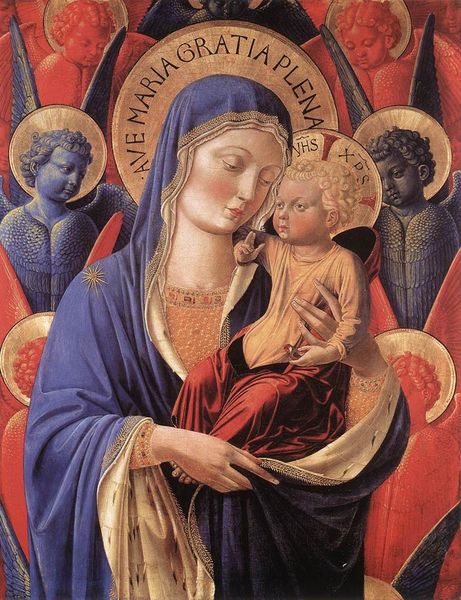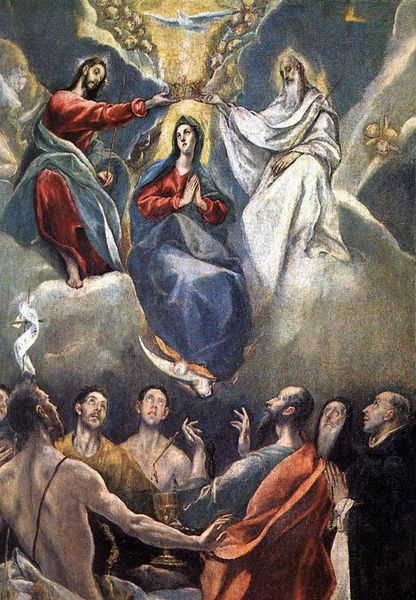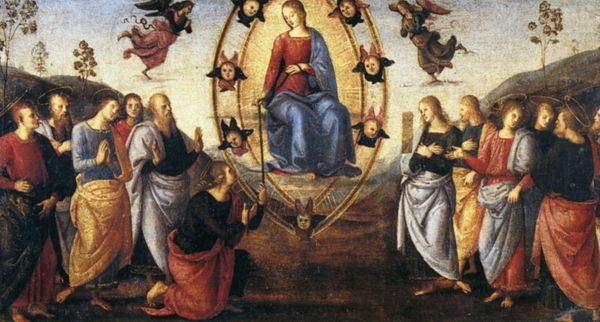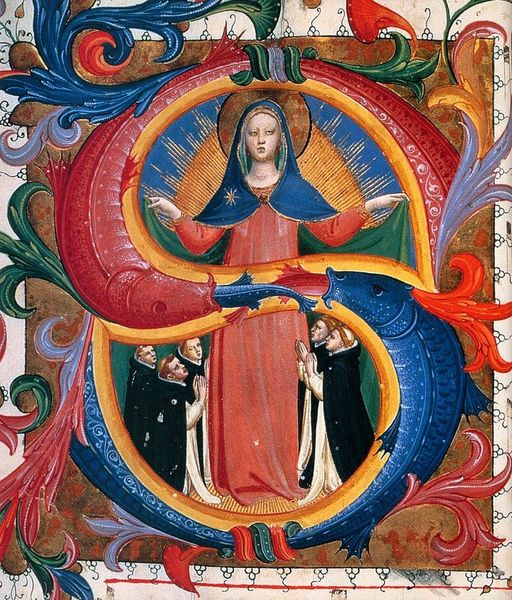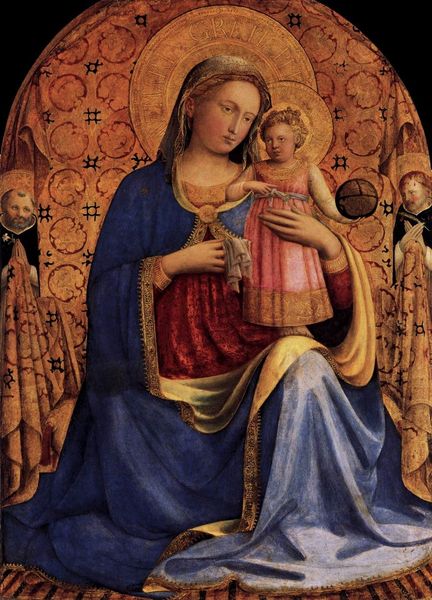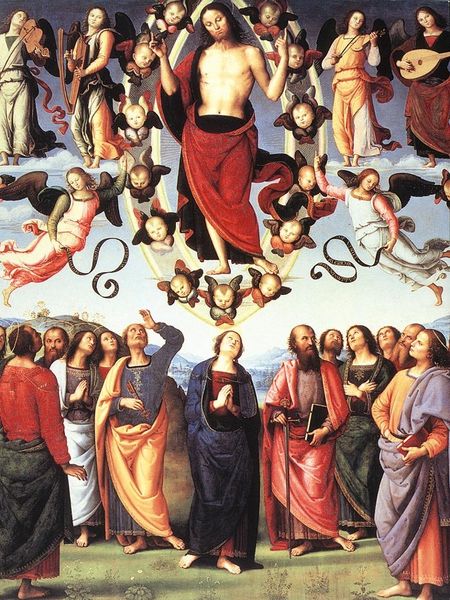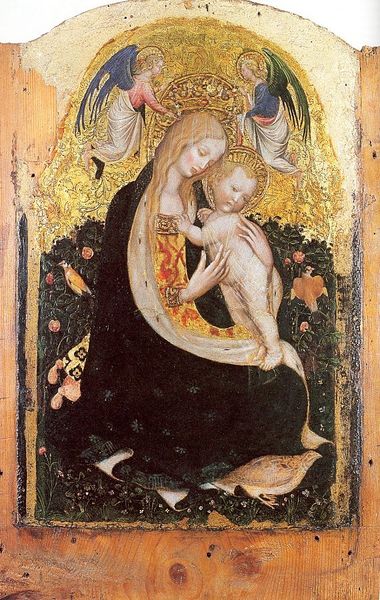
Copyright: Public domain
Editor: Here we have "Nossa Senhora da Porciúncula" by Mestre Ataíde, an oil painting mural from 1812. It’s quite striking, the way the figure seems to float among the clouds, surrounded by cherubs. What do you make of this piece? Curator: Well, seeing this mural, my immediate thought is about the socio-economic conditions that would lead to its production. Consider the availability, quality, and source of the pigments, and how they inform the final image. We're dealing with specific materials traded and processed by human hands – everything from the wood panel to the binding agents. Editor: That’s an interesting way to approach it. I was mostly focusing on the religious iconography and the artistic style. Curator: But the style is also linked to material constraints. How did the limited palette shape the artist’s choices? Look at the use of blues and reds. Where did they come from? The accessibility to materials in colonial Brazil would greatly impact the techniques used and ultimately the finished artwork. Editor: So, you’re suggesting the availability of resources shaped the final appearance of the painting. It makes you wonder if a wider range of materials would have led to a different aesthetic. Curator: Precisely. Understanding the means of production provides insights beyond mere visual analysis. Think about the labor involved – from the mining of pigments to the application on the mural. Editor: I never considered the painting this way, considering more what's available, the cost to get a specific dye, and all the hands needed. I was thinking more traditionally! Thanks for the insight. Curator: It changes how you "see," doesn't it? It enriches our understanding by grounding art in its material reality.
Comments
No comments
Be the first to comment and join the conversation on the ultimate creative platform.
